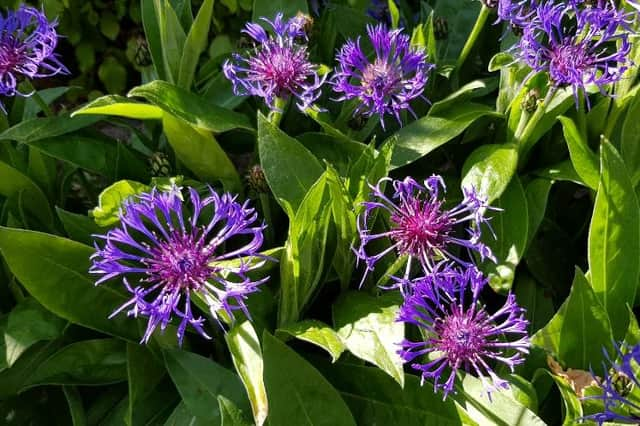Gardening: Self-sown plants can offer a real bargain


Everybody likes a bargain and when it comes to plants there are none cheaper than the self-sown subjects that can be found in a mature garden or allotment. I`ve just been taking the usual systematic trawl around the home plot and found several young specimens that can be lifted, potted-up and found a suitable home. Plants for free.
Shrubby types head the list but there are also herbaceous perennials, hardy annuals, and herbs on site that we did not introduce. We`ve been entertained by groups of bluebells (and white) alongside cornflower for years. They simply appeared and multiplied. Different dispersal agents are responsible for such surprises. Some are the result of bird activity, others have been brought in on the breeze, yet more the result of amazing plant dispersal mechanisms.
Advertisement
Hide AdAdvertisement
Hide AdWe`ve recently dug up five young holly plants of varying height and put that down to bird activity. The hard seed is ejected after consuming the flesh. It`s evident they also enjoy fruits of leycesteria (pheasant berry), cotoneaster, roses and berberis. Birds love the bright orange fruits of an attractive cuckoo pint (Arum italicum `Marmoratum`) with green and white, spear-shaped leaves. Beloved of flower arrangers, the plant has a darker invasive side, developing a bulbous storage organ well below soil level. The wild strawberry (Fragaria vesca) offers small, tasty fruits in summer but the birds think so too, and they caused the spread throughout our garden.
I`m occasionally asked to identify a plant out of the ordinary which has just turned up in someone`s garden, and asked `How did it get there?` Wind dispersal is always a possibility but when it`s a species indigenous to another country, my thoughts turn to migrant birds.
Birds are certainly not responsible for the explosion of blue violets and heartsease violas we`re currently experiencing, that is down to the tiny seed capsule that nature blessed with a special mechanism. When ripe it projects the seeds away from the parent plant. Both are so attractive and welcome though. They`re easily lifted and collected in groups to make statements throughout the garden.
Frustrated at not being able to go out and buy plants? Look more closely at your garden and see if it has any freebees to offer. A group of hellebores provide us with a spring seedling harvest every year. If some are dug up and potted, it can result in interesting colour variations. Young foxgloves pop up everywhere, so I round a few up and plant them in groups. Flowering spikes are rising on one such feature on a corner of the asparagus bed. Total cost, zero.
Advertisement
Hide AdAdvertisement
Hide AdPatience is required when you undertake propagation via layering. This basically involves selecting a stem of a woody perennial trailing near soil level and securing it to the ground. Over time it will form roots at the point of contact and a new plant emerges. However, sometimes nature simply gets on with it and delivers the plant as a surprise. I recently gave a large forsythia more than the usual post-flowering trim and discovered lower branches firmly rooted to the ground. They had layered themselves. Next up for pruning were Viburnums tinus and bodnantense, and they had done the same. When I cut into the thicket of stems surrounding winter jasmine, not to be outdone, it too revealed a bonanza of rooted layers.
Sometimes there`s a fine line between the habits of weeds and cultivated plants – columbine (aquilegia) for example. Some beautiful cultivars exist but they seed profusely, forming a taproot. Rampant colonisers, they are difficult to dislodge.
Taken at face value, Chrysanthemum parthenium (feverfew) is an attractive border plant that also colonises old walls in our area. However, the 10p sized flowers with white petals and yellow centre mask the potential to colonise a garden. Similarly, the Welsh poppy (Meconopsis cambrica) has such sweet yellow blooms, which cause us to lower our guard. They certainly arrived in this garden under cover and threatened to take over at one stage.
Years ago, a friend whose garden was overrun with them, gifted me a standard fuchsia, dug up and delivered to the door. Next year the poppy made a first appearance in my garden and has remained. Seed in the soil surrounding the fuchsia`s roots was clearly to blame. Beware gardening friends bearing gifts!